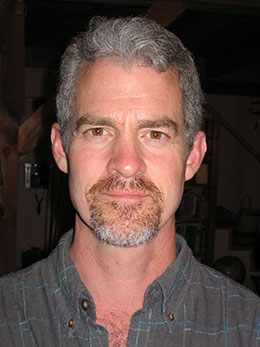
A Tracker's
TRAIL
 Greetings, I am Nate Harvey. I created this website and am the author of Trailing Wildlife, the curriculum to which the "Trailing" section refers. I have been certified by CyberTracker Conservation as a Senior Tracker and Evaluator for both Trailing and Track & Sign Identification.
Greetings, I am Nate Harvey. I created this website and am the author of Trailing Wildlife, the curriculum to which the "Trailing" section refers. I have been certified by CyberTracker Conservation as a Senior Tracker and Evaluator for both Trailing and Track & Sign Identification.
My focused study of tracking started in earnest during my thousand outings with George Leoniak, who is now an External Evaluator for CyberTracker, qualifying him to certify trackers at the Specialist level. With George, my mind was blown by the mystery of who could possibly have left such a large looking scat in such a tiny space next to a hole in the ground under the root of a pine tree. Since I made ends meet then with weekend work in New York City, it was my great good fortune that George was sharing with me his own discoveries at weekend workshops with Paul Rezendes (who, as I remember, directed him to the creator of that particular mystery), Charles Worsham, James Halfpenny and Sue Morse. For nearly ten years, George and I were together in the field two days a week, exclaiming excitedly about claw marks, taking the same pictures and helping each other orient to North so that maps in our respective tracking journals could have at least one reliably correct reference.
The journals at that time were for Jon Young, founder of Wilderness Awareness School and author of the Kamana Naturalist Training Program. In my view, Jon lives the great maxim from Antoine de Saint-Exupery, "If you want to build a ship, don't drum up people together to collect wood ... teach them to long for the endless immensity of the sea."
I am uncertain how exactly it came to pass that Mark Elbroch rented a room at George's place, but whatever our caliber and whatever our charge, Mark made crystal clear what it means to come with serious heat. Then in the early stage of a now storied career as a Cougar biologist and author of field guides and academic articles, it was Mark who would travel to South Africa to sit with legendary, traditional master trackers, follow their magnificently diverse wildlife and learn the precise methodology for evaluating trackers that Louis Liebenberg created for CyberTracker Conservation.
It has been a great privilege to study and track in the forests and deserts of North America with Mark, who is now one of CyberTracker's precious few Master Trackers, and with those he previously certified as Evaluators for Track & Sign Identification: George as well as Jonah Evans, Casey McFarland and Dave Moskowitz.
Now, to the trail! One of the handful of South African Master Trackers, Adriaan Louw brought us fascination, instruction, patience and humor about following wildlife trails. He and Mark certified Brian McConnell who is now an External Evaluator for Trailing. With a boyhood spent prowling and hunting the Arkansas woods, Brian has his own true pedigree as a tracker. I know Brian means it when he declares as a simple matter of fact that he'd take his knife over his clothes any day. His dance on a trail is as crisp, silent and seamless as any I have yet seen. He provided my training as a Trailing Evaluator.
None of this would be any part of my story were it not for the support, encouragement and forbearance of my wife, Keely Eastley. She started me tracking with Tom Brown's book, The Tracker, helps to straighten my back whenever I have slumped and always has ready a celebratory whoop. It is with Keely and with our son, Nicolai, now grown, that I am most aware of where my own trail leads.
![]() CyberTracker Conservation is a non-profit organization whose vision is to promote a worldwide environmental monitoring network.
CyberTracker Conservation is a non-profit organization whose vision is to promote a worldwide environmental monitoring network.
Since 1994, CyberTracker has certified trackers in South Africa for work in eco-tourism and wildlife monitoring. Since the certification process came to North America in 2005, it has established itself as the international standard for assessing wildlife tracking skills.
Track & Sign Certifications are now in use in Botswana, Namibia, South Africa, Congo, Canada, United States, Spain, Germany, Scotland and England.
With an emphasis on precise observation and field-based learning, the certifications have become unparalleled field trainings for a diverse audience of biologists, educators and naturalists.
For more information about CyberTracker Conservation, please visit cybertracker.org.
© Nate Harvey, 2015